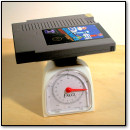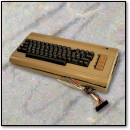[ Retro Scan of the Week ] Ultima VII For SNES
Monday, November 16th, 2015 This keychain looks like it would hurt in your pocket
This keychain looks like it would hurt in your pocket
Here we see an ad for the Super NES version of Ultima VII: The Black Gate. Apparently, when VII received its port to Nintendo’s console, its Roman numeral designation got the axe. As a result, the title became merely Ultima: The Black Gate.
I’m not a big fan of the SNES ports of the Ultima games (VI and VII). In the process of chopping things down to fit in a reasonably-sized ROM cartridge, a lot of content and features were lost (including the Roman numeral in this case). But at the same time, those ports likely gave console fans a taste of the Ultima universe that they would not have had otherwise.
As for me, I was lucky enough to originally play the Ultima games on the PC (and the Atari ST, in the case of Ultima III), so I guess I am spoiled.
Discussion Topic of the Week: In your opinion, what’s the best console port of any Ultima game?
—
See Also:
Ultima VII Immortality Contest (RSOTW, 2007)
Ultima VI (RSOTW, 2009)
Ultima V (RSOTW, 2009)
The Savage Empire (RSOTW, 2010)
Tiny Pocket Ultima (RSOTW, 2013)















